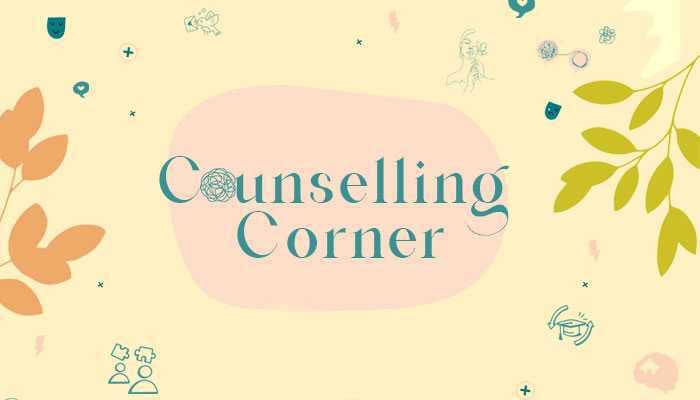Hello Haya,
I am a 23 year old woman and I am struggling with anxious attachment issues. I get attached easily and then create unrealistic expectations, expecting people to treat me how I imagine an ideal partner/friend would.
My main goal is to be confident in myself, so I can genuinely enjoy my own company and stop craving attention or validation from others. This constant overthinking is really messing with my mind and affecting my overall health.
Even when I detect these patterns, I still crave connection and I don’t like it. I would really appreciate any guidance you can offer. This is the milder version of what I go through when I’m stuck on someone, while in reality it’s much worse. Please help!

Dear anonymous,
Thank you for putting into words what you are going through. What you are experiencing seems exhausting, but not uncommon. It seems like you want connection, but nothing feels like enough and you are trapped in this feeling of frustration and hopelessness, fearing abandonment and rejection.
I hear you refer to anxious attachment in your query. Understanding attachment styles is great for developing self-awareness and understanding our needs, which is much needed.
While it is great that you are aware of attachment styles, I would like to point out to you not to label yourself or put yourself in a box because they are not set in stone, we can move through them. We can experience different types of attachments in different adult relationships.
Let’s first take a look at how to understand what these attachment styles are.
Attachment styles develop in childhood. Depending on the type of care we receive from our first caregivers, each of us develops attachment styles. Secure or insecure (anxious, avoidant). Our attachment styles describe how people bond, seek closeness, and manage emotional intimacy in adult relationships, all rooted in caregivers’ early experiences.
So how do we heal from insecure attachments?
Do you have any questions for Haya? Complete this form anonymously or send an email to [email protected]
Insecure attachment styles are more similar than you think. They are caused by a feeling of insecurity and insecurity in interpersonal relationships, and a deep fear of rejection and abandonment.
An unhealed anxious attachment looks like:
- Ignoring the warning signs.
- Fearing rejection.
- Being described as needy.
- Being attracted to emotionally unavailable people.
- Using the relationship to create a false sense of inner security.
- Confusing lust for love.
- Accommodate other people to avoid abandonment.
- Give up your own needs.
- Doing things to manipulate the other person into giving you an emotional response: threatening to leave, causing jealousy, provoking fear, or distancing yourself to “prove a point,” etc.
An unhealed avoidant attachment style looks like:
- Being attracted to anxiously attached people to satisfy your need for intimacy without having to do the work.
- Self-sufficiency and independence are more important than interdependence.
- Protect their freedom even at the expense of other important players in their lives.
- Retention commitment.
- He is unlikely to show feelings.
- Focus on your partner’s flaws to create a case for “leaving” or “treating them badly.”
- Focus on fantasies of another person who seems better than your partner.
- Hypervigilant to any attempt to be controlled.
- Making unilateral decisions that impact society or another person.
- Flirt with other people
- Discard your partner’s emotions and needs.
- Find ways to sabotage the relationship.
The way to overcome what you are experiencing in relationships is to create awareness that you are experiencing it. For example, for people with anxious attachment, it’s about taking responsibility for themselves, learning to calm down, acquiring assertive communication skills, and setting boundaries when red flags appear.
For the avoidant, it is taking responsibility for the relationship. This means developing awareness of your partner’s needs, making “bilateral” decisions and accepting influences, becoming comfortable expressing your feelings, and learning the difference between a boundary and a limit.
I hear you say that you want to develop a secure relationship with yourself. Here are some things you can work on:
Practice awareness and identify triggers.
Become aware of when strong or intense emotions arise. Observe your feelings and their meaning before acting. If it’s too overwhelming, walk away for a walk, collect your thoughts, and come back with clarity.
Regulate your nervous system
The activated accessory can put you in fight/flight/freeze mode. In this state, you are more likely to act on impulse. Take time to pause and breathe.
Identify your own needs
Ask yourself what it is that you need. “What do I want in this situation? What would feel good to me? How do I feel in my body about this decision? Does it feel like a good regulated decision or am I reacting like a ping pong ball? A key healing step is to practice validating your own experiences, fears, concerns, desires, needs, preferences and requests.
This means acknowledging, “Yes, I feel this way, and it makes sense that I feel this way.” It’s about standing firm in what you know to be true for yourself, without needing external confirmation or approval from others, especially those who might be causing discomfort.
Building confidence in yourself
You may seek frequent and ongoing comfort from your partner to manage your fears and insecurities, but this external comfort often provides only a temporary solution and does not address the underlying wound. Instead of measuring yourself by the approval of others, practice affirming your strengths, talents, and efforts. Keep a running list of personal accomplishments, whether big or small, and review it whenever you feel inadequate.
Expand your tolerance for uncertainty and build trust.
Consciously practice leaning into discomfort, face your fear of abandonment, and practice letting go of your need for control. Every time you learn to survive the unknown, your confidence will deepen.
Parent your inner child
Working on identifying and giving you what you didn’t receive as a child. This can be achieved by giving yourself the love, support and kindness that you did not receive as a child. Be compassionate with yourself, forgive yourself for mistakes, consult and console yourself if this is what you need. You can think of this as treating yourself the same way you would show kindness to an innocent child.
Challenge your thoughts
When you experience negative thought patterns, remember that while they seem real, the thoughts are not necessarily true. Don’t believe every negative thought you have and instead try to challenge them when they arise.
Express your feelings
Putting your thoughts aside and putting them into something meaningful can be a healthy way to manage strong emotions. This could be expressed through the creation of works of art, movement or music.
Take responsibility in the relationship.
As you become more confident, you will naturally strengthen your “taking responsibility muscle” and establish healthier emotional and energetic boundaries. This means learning to distinguish between what you can (and should) manage and what belongs to someone else. If you tend to feel anxious, you may feel compelled to “fix” your partner’s withdrawal or mood swings to alleviate your own discomfort. True healing involves resisting that urge: you can’t control another person’s feelings, and trying to do so only frustrates both of you.
know yourself
We can be so fixated on other people and giving in to their needs that we don’t focus on ourselves. What do you like to do? Who do you like to be with? Know yourself and spend intentional time with yourself.
Work with a therapist
I highly recommend working with a therapist. Through therapy, you can learn to recognize your attachment patterns, examine your feelings about yourself, and learn to approach relationships with others in healthy ways.
Self-acceptance
Last but not least, and most importantly, accept where you are. We can spend so much time fighting against ourselves that we don’t focus on accepting where we are. Different experiences have brought you here, work with yourself with acceptance and compassion.
These are some things you can start actively working on. Once again, I would like to remind you that attachment styles are not set in stone. You can develop a secure attachment style, no matter how old you are or who you are.
– Is

Haya Malik is a psychotherapist, neurolinguistic programming (NLP) practitioner, corporate wellness strategist, and trainer with experience in creating organizational cultures focused on wellness and mental health awareness.
Send your questions by filling out this form or send an email to [email protected]
Note: The advice and opinions above are the author’s and specific to the query. We strongly recommend our readers to consult relevant experts or professionals for personalized advice and solutions. The author and PakGazette.tv assume no responsibility for the consequences of actions taken based on the information provided here. All published articles are subject to editing for grammar and clarity.





